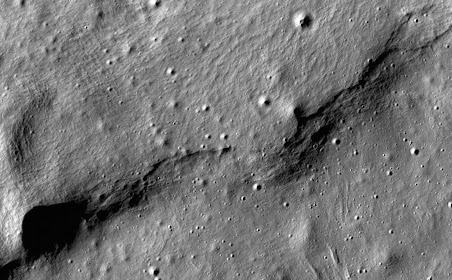You have probably heard that hot things expand and cold things contract. Maybe you learned that if a lid jar is stuck too tightly for you to open it, you can run hot water over the lid. The heat expands the metal lid, making it looser and therefore easier to open.
You may even experience this at night in your house. During the heating of the day, the wood in your house expands just a bit. In the cooler air of nighttime, the wood shrinks. You may hear this as creaks around your house. That’s not ghosts but rather the wooden parts rubbing together ever so slightly as the wood shrinks. My ghost-phunting team spends a lot of time explaining to homeowners who are convinced their home is haunted that those footsteps they hear are actually the thermal creaks of their house cooling and shrinking ever so slightly causing the wood two-by-fours to rub together.
Jar lids and houses aren’t the only
things that expand and contract when subjected to heat and cold. Any rigid
solid object will react to temperature this way. Even rocks. The seasonal
heating and cooling cycle is a contributing cause of the erosion of mountains. As
the rock heats up in summer months, tiny cracks form that can become filled
with moisture. During the cold winter, the water freezes. Water is one material
that actually expands when it freezes as the water molecules rearrange into a
crystalline pattern. As the ice expands, it widens the cracks, eventually causing
bits of the rock to crumble into smaller bits.
Now think of a larger object, much larger, like our Moon. It formed about four and a half billion years ago when a Mars-sized object called Theia slammed into the newly formed Earth. Theia’s molten iron core sank to the center of our planet, joining our molten iron core. Geologists recently identified two large hunks of molten rock surrounding our planet’s core that they believe are remnants of the Theia.
Much of the rocky outer parts of Theia and some of Earth’s rocky surface parts were flung off in the collision and went into orbit around the now larger Earth. That debris eventually coalesced into the Moon. This new Moon slowly cooled and, as it did, it began shrinking. And that shrinking continues today.NASA satellites orbiting the Moon have photographed most of its surface. Planetary geologists have identified numerous scarps on the lunar surface, wrinkles caused by the Moon’s shrinkage. This is the same phenomenon that happens to an apple’s skin. It shrinks as it ages and dries out, causing it to wrinkle, just like our Moon’s surface.
An example of a lunar scarp.
Earth sits in the center of our sun’s
habitable zone, the region where liquid water can exist on the surface of our
planet. Venus orbits just inside the habitable zone. As a result, Earth is a
lush planet full of life, while Venus is a hellish planet with surface
temperatures hot enough to melt lead. But, if Venus orbited where Earth does,
it likely would be a planet with life. It’s just a bit smaller than Earth and
made of the same stuff as Earth. But for the specific orbital paths of the two
planets, Venus would be a life-bearing planet.
On May 23rd, NASA announced the discovery of a Venus-sized planet in the habitable zone of the star Gliese 12, only 40 light years away, virtually in our backyard as astronomical distances go. We have no idea if life developed there, but it is certainly a strong candidate for us to study further.
Each month, I write an astronomy-related column piece for
the Oklahoman newspaper. After it is
published there, I post that same column to my blog page.


No comments:
Post a Comment